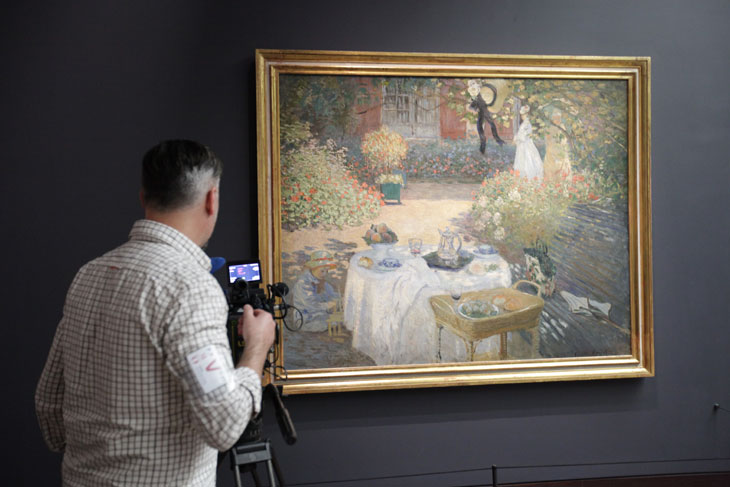In order to make it to the traditional terrestrial channels these days, it seems, art must provide gripping, dark mysteries, or a neat modern hook. Jeremy Paxman might take us in real time, with reconstructions, through the night Van Gogh chopped off his ear (or did he?). The Mona Lisa might be pictured at a remove, as gallery goers hold up their selfie sticks. Otherwise it is BBC Four for you.
ITV – which has been criticised in the past for its lack of arts coverage – has made a bold move, then, in commissioning a traditional, no-nonsense art programme. Great Art, the third episode of which aired last week, is adapted from feature films made by the production company Seventh Art, who record gallery exhibitions and displays for posterity. It bills itself as a back-to-basics response to art programming. Just good art, presented and explained to the viewer. A lovely, unfussy ideal, if perhaps a naive one.
The programme is presented by Tim Marlow, artistic director of the Royal Academy – but he only really does a sort of service announcement at the beginning, handing over to a cast of talking heads and voiced extracts from texts by or about the featured artists. The first episode, on Canaletto, opens with views of Buckingham Palace, and later overloads us with shots of Venice. Baroque-influenced orchestration is played over the images. So far, so staid and predictable. Relief comes with in-depth analysis of sketch books and explanation of Canaletto’s technique, such as how the artist used a fingerprint to achieve a certain texture of stone. The episode is rigorous if not momentous.
Robin Fox filming work at the Musée d’Orsay for Great Art (dir. David Bickerstaff)

The second episode focuses on a dealer rather than an artist – Paul Durand-Ruel – and takes a novel approach to demonstrate the workings of the Impressionist movement. A soundtrack of Debussy and Ravel fits not just the era, but the programme’s pace and tone. And the third episode, aired last week on Michelangelo, is just as admirably restrained: a narration taken from Vasari’s Lives of the Artists, and from the artist’s own poems and letters explains how, by the age of 22, he had surpassed any existing examples of sculpture. By 25 he had given us his Pietà. It’s a story of dazzle and prodigiousness, but at no point does the film try to foist all of Michelangelo’s masterpieces on the viewer.
Jonathan Jones says Michelangelo was the ‘original famous artist’ or first ‘celebrity artist’. Were this production a different sort of affair, a montage of modern celebrity artists might have followed. Instead, Francesca Nicoli of Studio Nicoli, the world-famous marble studio, explains the stages in which Michelangelo would have worked on his sculpture, often unassisted – as is the case with his David. To my mind, this type of detail is more likely to capture the imagination of viewers new to art; it allows them to revel in the tactility of the works rather than indulging in the reverence and glamour that surrounds artists.
Filming sculptures at Studio Nicoli Carrara for Great Art (dir. David Bickerstaff)

But for all that, I don’t entirely have faith in the slow pace of the series. Art speaking for itself, with no consistent guiding voice or personality, works beautifully in the context of Seventh Art’s stand-alone, feature length ‘Exhibition on Screen’ films. But good art telly requires a personality out front. A Robert Hughes, ideally – but I’ll take an Andrew Graham-Dixon.
Over on BBC Four, Graham-Dixon’s new show Art, Passion and Power: The Story of the Royal Collection started last week. It has montages of conservators doing forensics to tense minor key orchestration. It has a masterful tragic arc, showing how British monarchs brokered power with art, from Henry VIII’s grandeur, to Edward VI’s whitewashing of church paintings, to the art-loving excess of Charles I, which contributed to his fall. It’s a great piece of TV, but it’s more of the same. An art show about British pomp – our ‘greatest export,’ according to Graham-Dixon. Combine aspects of the two shows – a subject approached from an unusual angle, with a charismatic guiding hand – and you would have great art TV.
Great Art is broadcast Thursdays on ITV at 10.45pm. The series is available to watch on ITV Player



